Golf Mats: Beneficial for Improving Your Game?
Are Golf Mats Ruining Your Swing? Find How to Practice Better and Finally See Results from Your Time on the Mat.
Golf mats are probably an ever-present element in your personal practice routine. Nowadays, you’re far more likely to see golf mats at the driving range. Turf can be more expensive to maintain, and as mat quality improves, the switch is a no-brainer.
A mat may also feature prominently in your home practice. Maybe you’ve got an involved setup with a golf simulator. Or perhaps you just want to protect your lawn. Or you’d rather not destroy your body and equipment by hitting off the concrete when you’re practicing in your garage. (If you are looking to complete your home setup, use our promo code “USGTV” at checkout to get special pricing with Real Feel Golf Mats!)
Whatever scenario you’re working with, a practice mat can be an asset. But it can also be a detriment to your golf game, your safety, and your enjoyment.
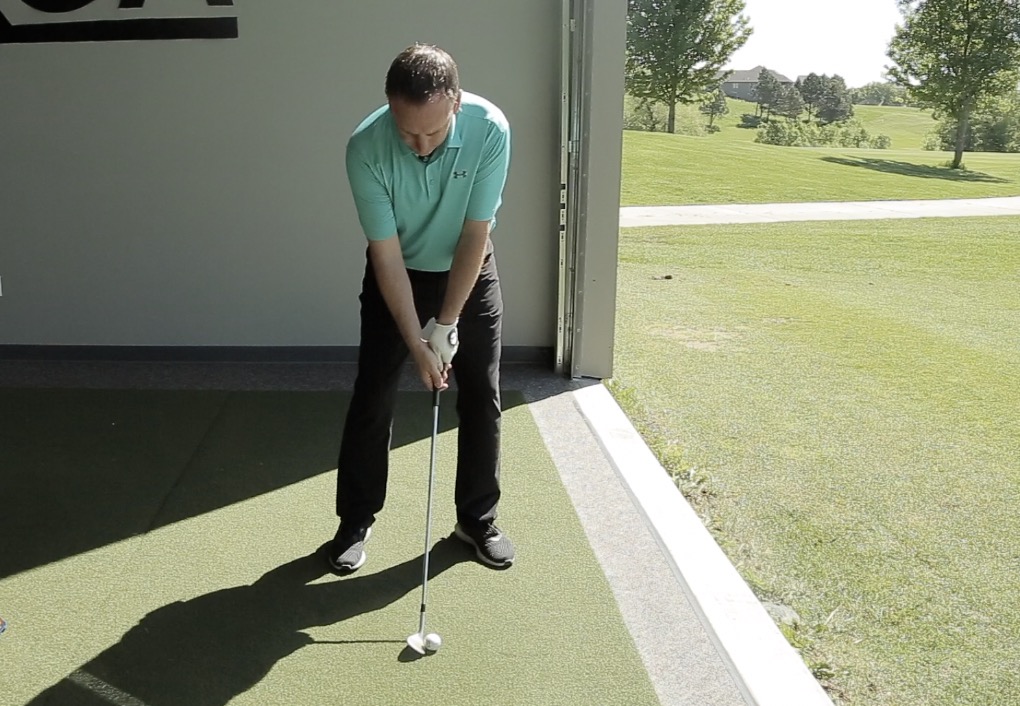
To make the most of your practice mat, you need to know how to use it safely and effectively. You also need to understand common errors when hitting off a golf mat, as well as which mats are best.
Practicing with a mat will only help your swing . . . if you do it right. Here’s everything you need to know.
Effects of Hitting off Golf Mats
The first and most important question here is:
What is the ultimate effect of hitting off a golf practice mat?
Will it genuinely help you improve your swing? Does it come with any risks to your game or to your body? How do the potential benefits of using a golf swing compare to those of practicing on natural grass?
First, let’s start with the most important concern: your safety.
The Risk of Injury
We hear a lot from golfers who don’t understand why they have so much pain in their arms and wrists after a practice session. Are they overdoing it? Is something wrong with their form?
You might be surprised by how often their golf-related injuries come down to their use of a golf mat.
Suppose you come down hard on the ball and accidentally hit the mat first. The motion is more jarring to your joints on a mat than on turf because a mat won’t give way.
Now, golf mats have evolved in recent years, and newer models are more forgiving. If you have an older mat that hits like concrete, you may want to consider upgrading. Find a mat that makes it easier to enjoy an injury free practice session, like Real Feel Golf Mats (our favorite).
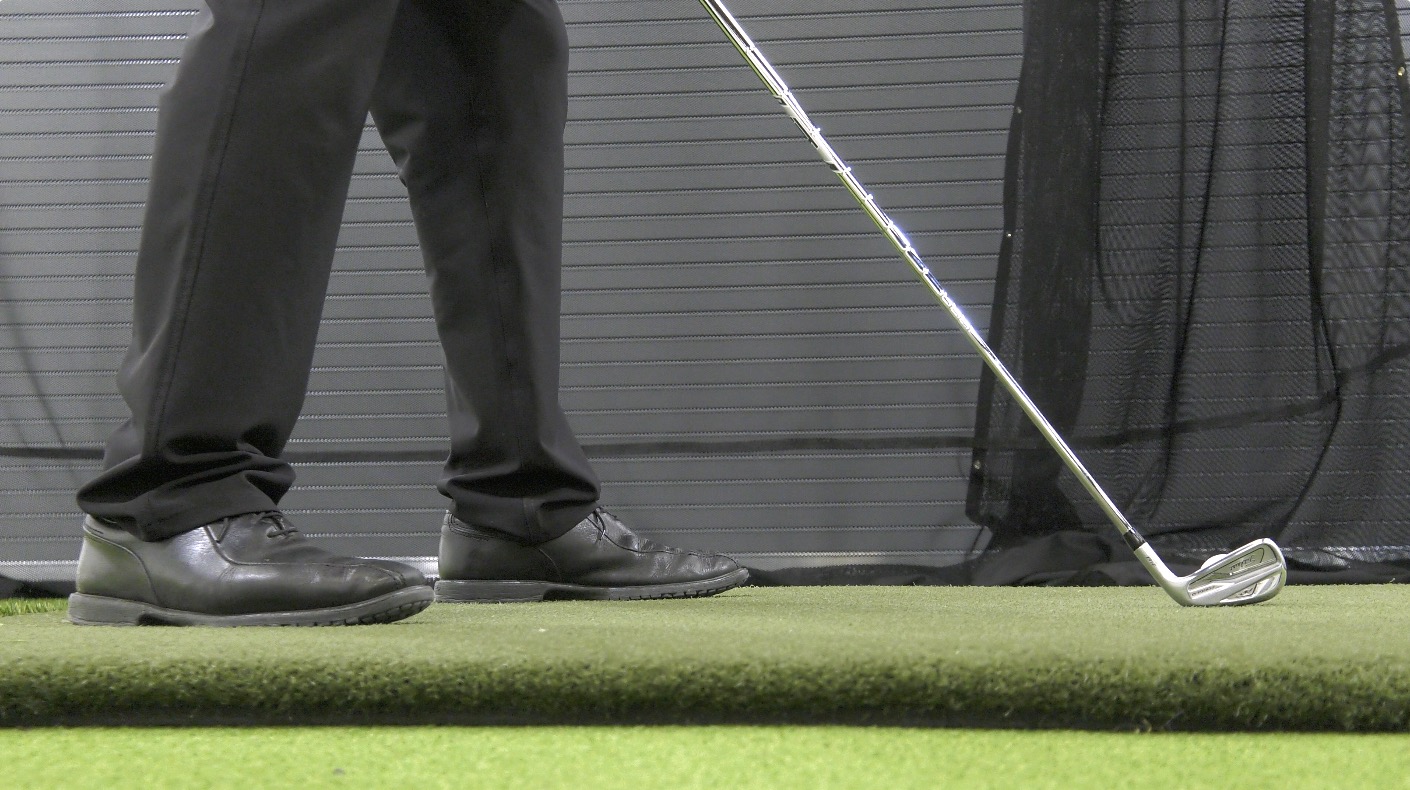
The Effect on Your Swing
The other important question when it comes to hitting off golf mats is:
Will this actually improve my swing?
Overall, yes. Any practice is better than no practice (for the most part), and golf mats allow you to work on your swing virtually anywhere. If you don’t have access to a golf course or time to hit the driving range, a mat allows you to get a few shots in at home. Overtime, that regular, consistent practice can help you make great strides in your swing and golf game.
That said, you do need to understand that artificial turf cannot perfectly replicate the experience of playing in natural grass. It’s fairly easy to hit the golf ball clean on a mat, because you’re not battling the interference of grass, dirt, and water. On a mat, you have a perfect lie every single time.
You may also find that the mat occasionally shifts on you. The earth does not.
So, yes, practicing on a golf mat will help to improve your swing. Just be aware that it’s not an equivalent surface. If you have struggles on the course that you don’t have on the mat, some occasional practice on natural turf could be beneficial.
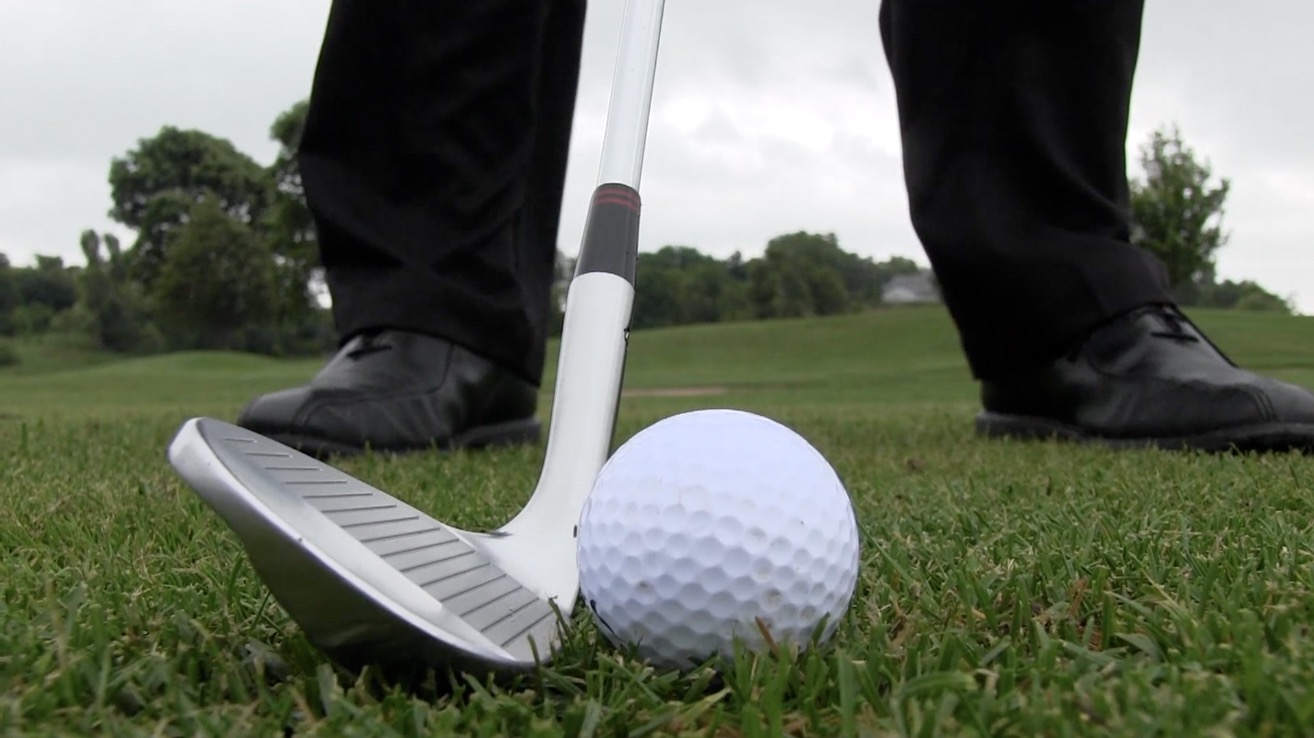
Pros and Cons of Hitting off Golf Mats
In order to enjoy your golf mat practice, you need to set clear expectations. Understand what you stand to gain and be prepared for some potential disappointments.
Here are greatest pros and cons to practicing with a golf mat.
The Pros
Probably one of the biggest benefits to hitting it off a golf practice mat is that, well, you get to hit a ball. Golf mats make it possible to get your swings in no matter where you are. The driving range, your backyard, hitting into a net in your garage . . . anywhere.
Then, there are the benefits of working with artificial turf. You have a perfect lie every single time. While that does prohibit you from learning to adapt to the elements, it also helps you learn the feel of clean contact.
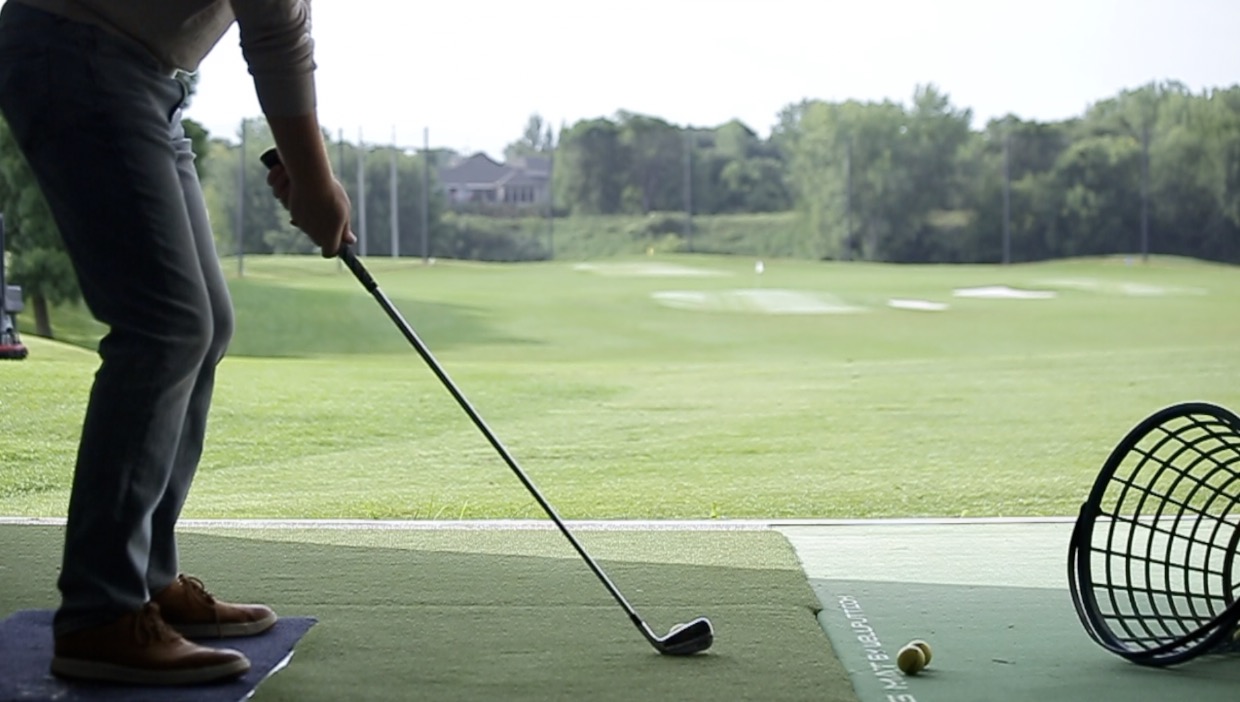
With a golf mat, you can get a lot more swings in over a limited period of time. You don’t have to keep moving and resetting shots to work around divots. And that means you don’t have to constantly adjust your training aids, either.
Finally, if you want to get super specialized, you can even use a pressure mat to help you master weight distribution.
The Cons
Now for the cons. Please note, none of these are reasons to avoid using a golf practice mat. Rather, these are things to bear in mind . . . concepts that help you use your time on the mat wisely.
Less Feedback
As we mentioned, a golf mat has less give than natural turf. Not only does this characteristic set you up for potential injury if you’re not careful, but it also provides less feedback.
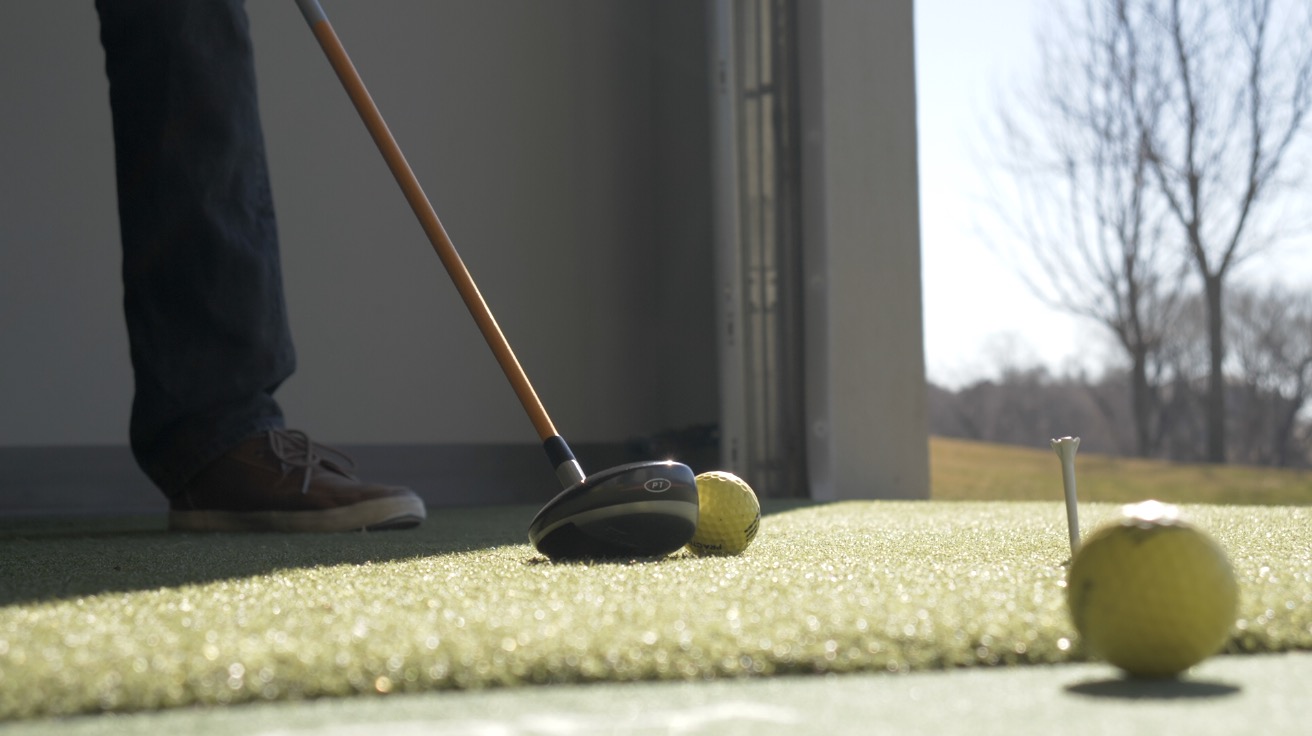
The hard surface of a golf mat provides a little extra bounce for your club. Here’s why that matters:
Let’s say you’re swinging your iron and hit your low point just before making contact with the golf ball. This is a problem because we always want to hit down on irons. Now, on the turf, you’d both see and feel the problem. You’d catch a little dirt and grass, make a divot, and mess up your contact. You may even see that turf fly farther than your ball. (That always hurts.)
But on a golf mat, the club is going to gently bounce off the surface of the mat, and your contact is going to feel clean. You may not even be able to see any consequences of an imperfect hit if you’re shooting into a net.
Some Clubs are Trickier than Others
We’ll get more into practicing with different clubs in a minute. But for now, just know that some clubs present greater challenges than others on a golf mat.
Longer clubs such as fairway woods and hybrids are often easier to practice off the grass. And because turf mats increase bounce, you can expect to run into difficulty with wedges, which are made to bounce.
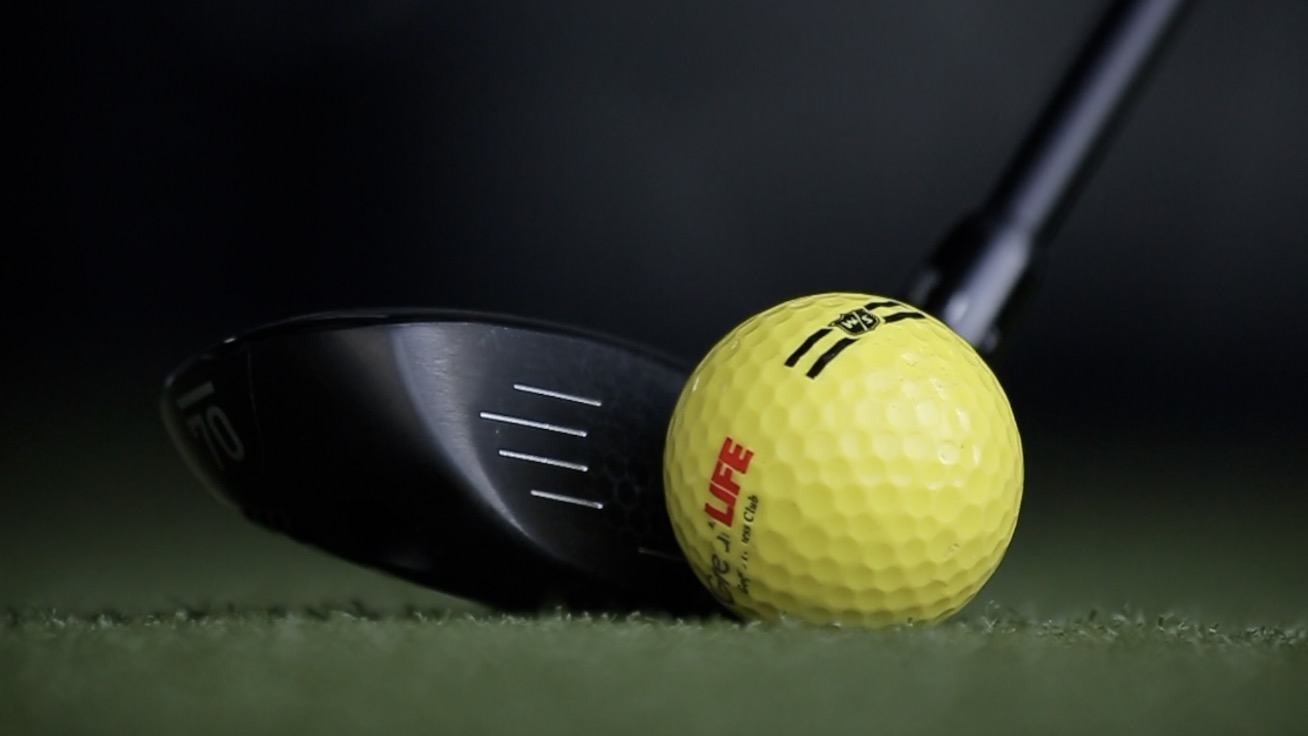
You also need to know how to property tee up when you practice your driver on a golf mat. Whether you use regular tees or rubber tees, there is a right way to do it. We’ll get into that in a bit.
False Sense of Reality
Finally, you need to remember that the time you spend practicing on a golf mat is not necessarily indicative of how well you’re about to play.
You’ve probably had this experience before: You have an incredible range session, then your golf game is a nightmare. Or the opposite happens. You hit terrible shots on the driving range and wind up crushing it on the course.
Then, there are some players who consistently hit their worst shots off the golf mat. They’re excellent in a round of golf, but put them on a practice mat, and suddenly they’re shanking every shot.
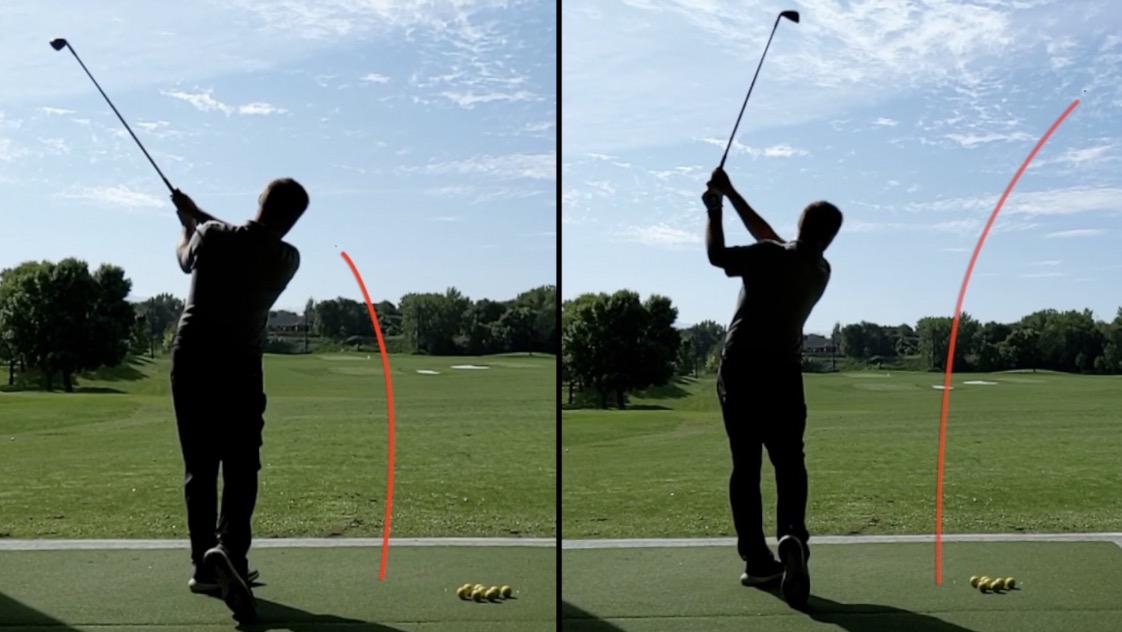
In short, you need to know that a turf mat is not necessarily the most reliable indicator for how well you play.
Rather, it’s another resource—a great resource—for loosening up, practicing your swing, and building confidence.
Tips for Hitting off a Golf Mat
If you hope to get anything out of your time on the golf mat, you need to know how to adapt your practice time. Artificial turf creates different challenges and can give you a misguided sense of your own progress.
However, the unique surface of a golf mat also provides an opportunity to sharpen specific skills.
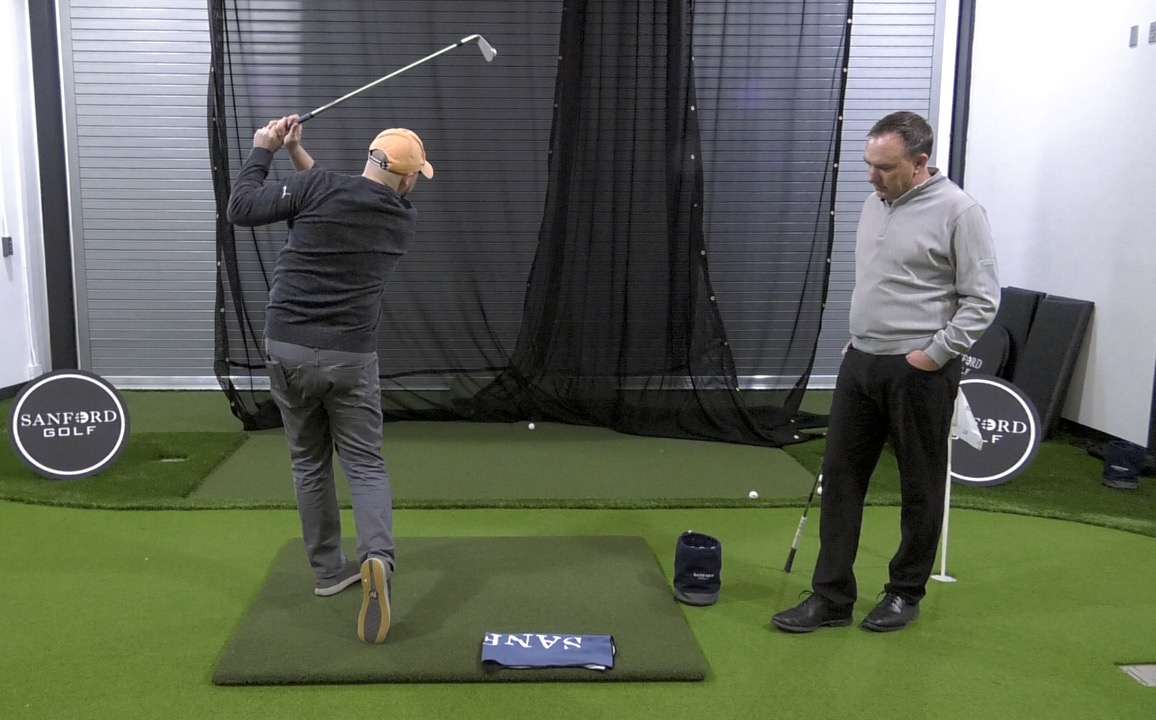
There is no one-size-fits-all rule for hitting every club off a golf mat. Shorter clubs tend to be easier than longer clubs. Golf clubs with wider soles and a lot of bounce are trickier to manage. But there is an advantage to trying each of them, as long as you know how to practice productively.
Here are a few pointers for each club.
Practicing with Your Driver
Whether at home or at the driving range, a golf mat is great for practicing drives. We especially love this opportunity to work on perfecting your driver setup.
When you swing your driver, the goal is to catch the ball on an upward trajectory. That’s why we tee it up. Because a golf mat avoids the interference of natural grass, you can easily hit up on the ball and get nice, clean contact.
However, in order for this to work, you need to be consistent with your tees.
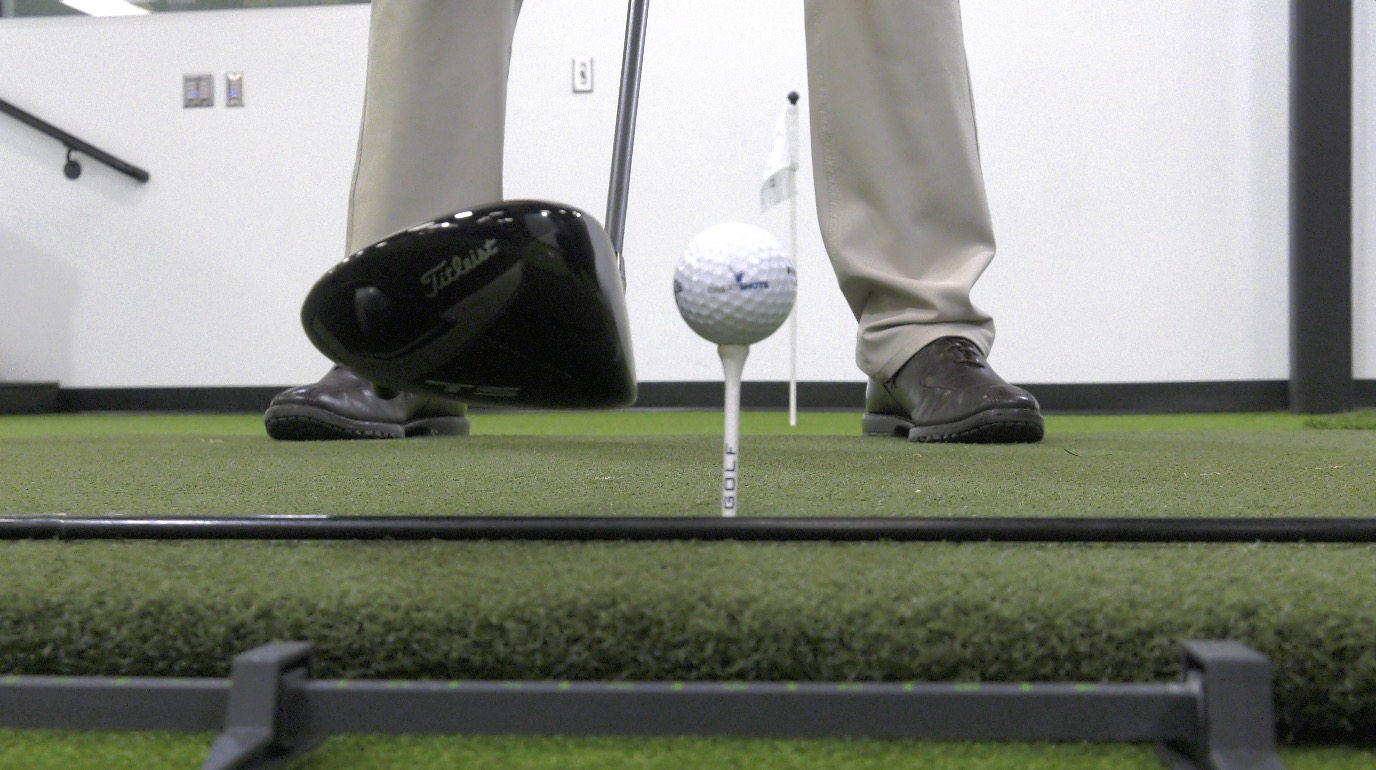
If you’re able to use tees in your artificial turf, opt for the short tees. You won’t be able to stake the tee as deep into a golf practice mat as you would the ground. This means that regular long tee is going to stick out way farther than it would in your regular golf game.
Practice how you’re going to play. The same goes for rubber tees. Check the height to make sure it’s consistent with your setup at the tee box.
Practicing with Wedges
One of the most challenging skills in the game of golf is distance control. So it’s no wonder we see so many golfers practicing their wedges at the driving range.
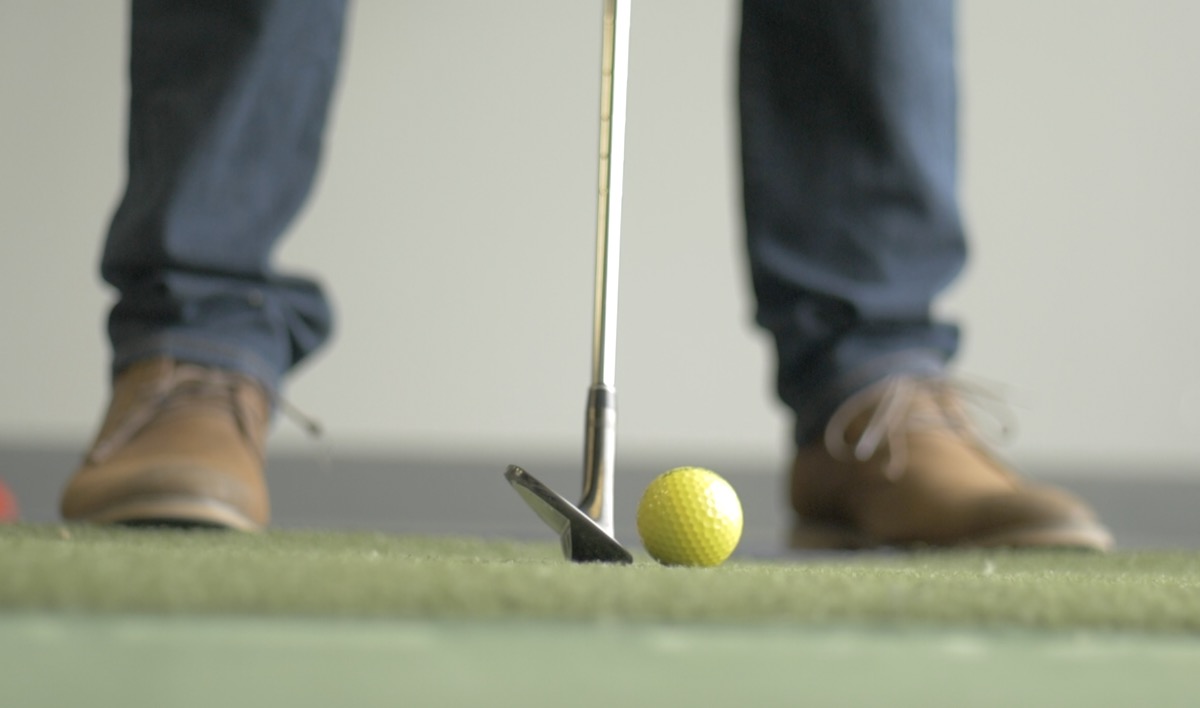
But it’s also no surprise that many golfers get discouraged hitting their wedges off golf mats.
If your clubhead hits the artificial turf too early, the hard surface of the practice mat causes the club to bounce. When it comes to wedges, this can be a big problem. Those clubs are already made to bounce in natural grass. They don’t need any help from the golf mat.
And this is exactly why we encourage you to practice your wedges on the golf mat. Our Director of Golf, Todd Kolb, has his students practice their chipping off a practice mat for this very reason. That bounce exposes faults right away, so we know what to work on and improve.
If you struggle with your chipping, grab your 60-degree wedge, swallow your pride, and step onto the mat.
Drills for Practicing Irons on a Golf Mat
We love practicing irons on golf mats. They’re not too long and don’t have as much bounce as a wedge. Not to mention, irons account for a large portion of your golf game, so you might as well master them.
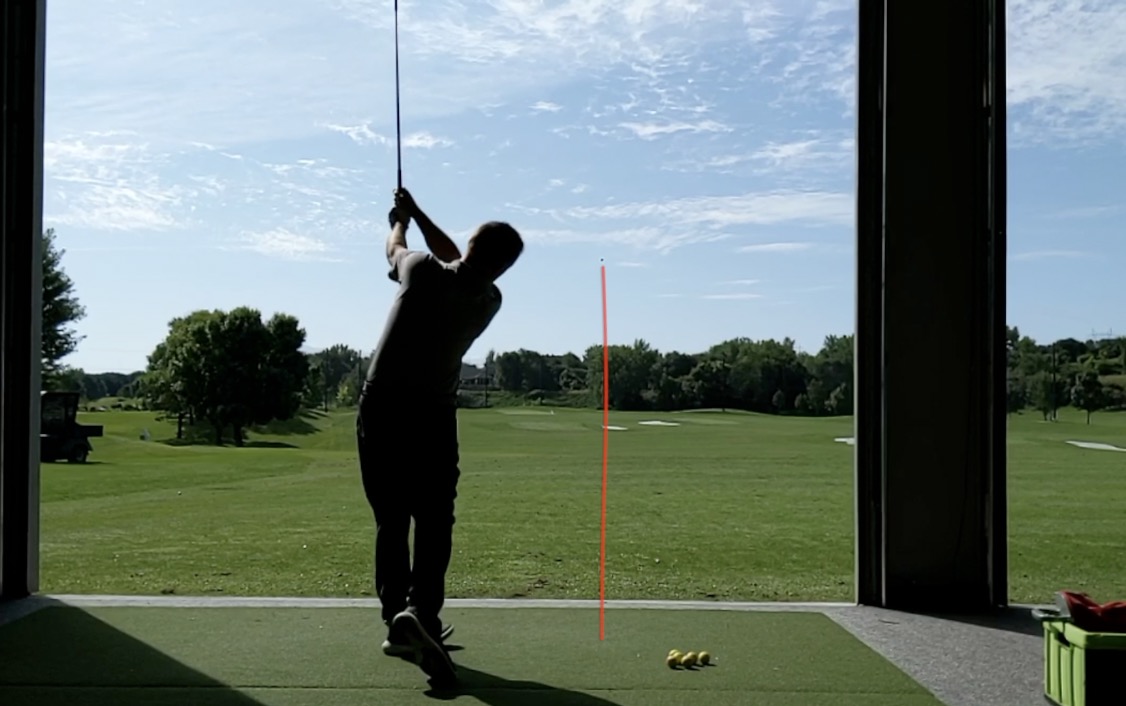
The next time you head out to practice, we recommend trying one (or both) of these iron drills on your golf mat.
Drill #1
As we mentioned before, you don’t always get crystal clear feedback from your irons when hitting off a mat. If you hit it a little behind the golf ball, the forgiving surface of the mat allows for a little bounce. This creates the sense that you’ve hit it clean.
But if you were in natural grass, you’d have a much different shot. You may even create a divot and see the turf carry farther than the ball.
This drill creates visual feedback on your shots so you know whether you actually are making clean contact. The steps are simple.
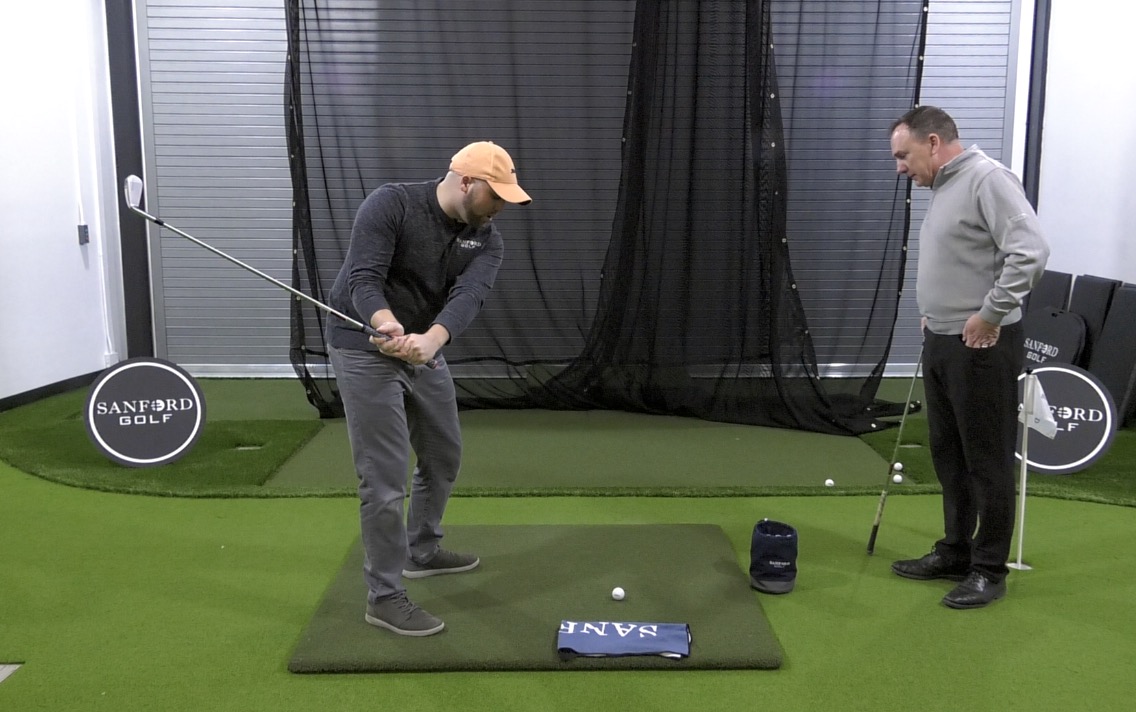
- Place a towel on the ground 4 – 5 inches behind the golf ball . . . maybe a little closer if you’re a strong golfer. You can also use a head cover for this. Anything that lies flat will do.
- Take your golf swing.
- The towel should remain undisrupted.
If your club hits the towel, you’ll know that you’re bottoming out before you hit the ball. This means you need to work on hitting down on your irons.
Drill #2: 3 = 4
This drill is great for working on rhythm and tempo. And it’s an especially great drill for mat practice.
The idea is pretty basic. You’re going to take four swings but only hit three balls.
- Place three golf balls in a row.
- Imagine a fourth ball at the front of the row.
- Position yourself in front of the imaginary fourth ball and take a practice swing.
- Step forward and hit the next ball.
- Step forward and hit the next ball.
- Then do it one more time.
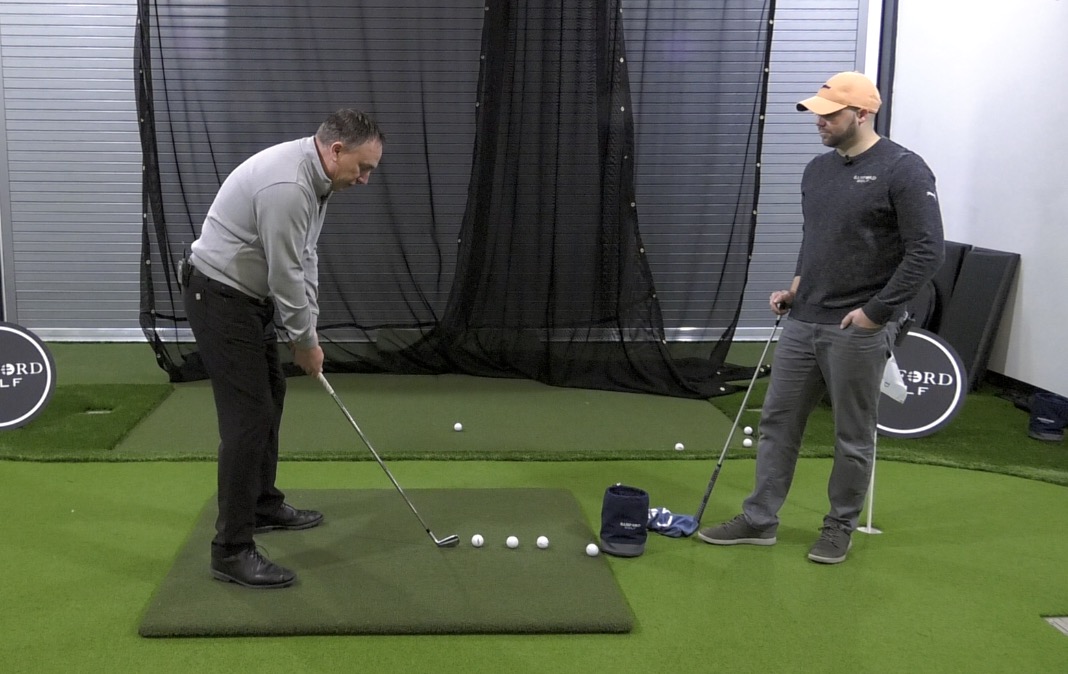
The key is to keep swinging once you start. You don’t settle in before each ball. It’s a steady rhythm of swing, step, swing, step, swing, step, swing. This continual motion helps you get the tempo into your body and improves your balance.
Best Golf Mats
Planning to invest in your own personal golf mat? A mat is definitely a worthwhile addition to your practice toolbox. But be choosey. Different practice mats deliver different results.
You want a mat designed with the physics of golf in mind. Look for the following characteristics.
Must-Have Qualities of an Effective Golf Mat
First and foremost, you need your mat to be safe. Choose a forgiving surface that offers a little give when you hit the turf. You don’t want to slam your joints.
Also related to the safety issue: Find a sturdy mat that doesn’t move. Some golf mats slip on you, which can wreck a good shot or even throw you off balance. Make sure yours has good grip.
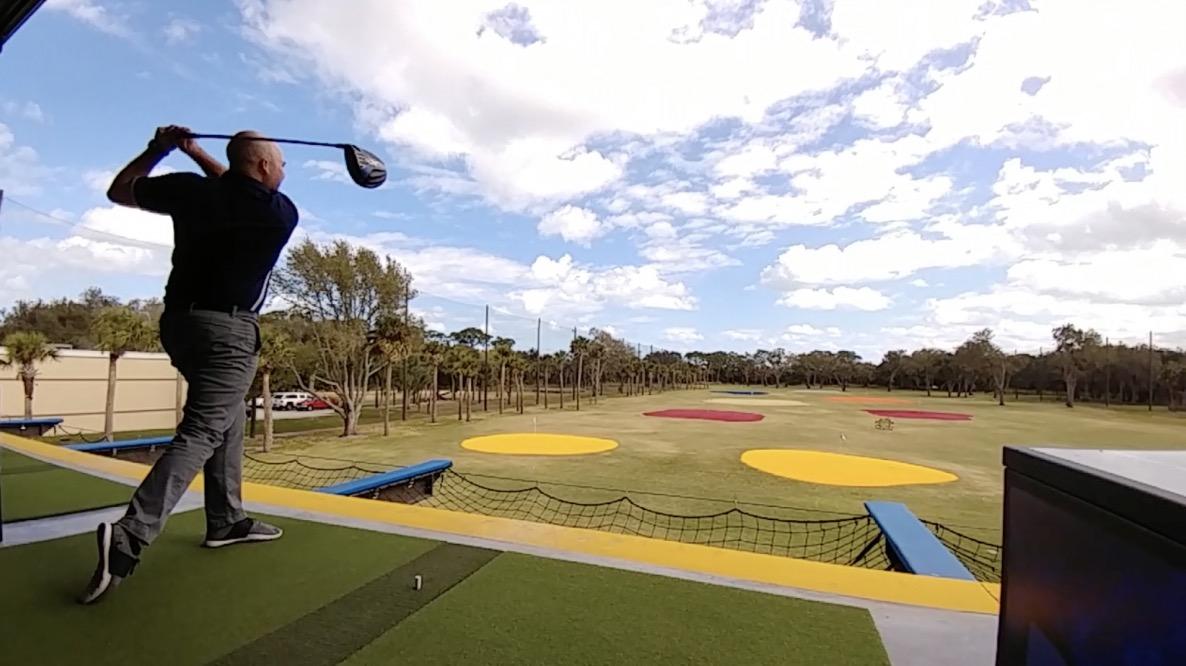
Durability is key. The greatest benefit of having a golf mat is that you can get more practice time in. With this in mind, you need to find a mat that can literally take a hit. Several hits. Look for a high density of turf and plenty of give.
What’s THE Best Golf Mat?
Opinions may vary on this subject, and you should certainly do your homework. But for our part, Real Feel Golf Mats are far and away the best option. (Use the promo code “USGTV” at checkout for our special discount!)
These mats are made with all the features listed above. Plus, they come closer to delivering real feedback than any other mat we’ve found. That is to say, when you hit off one of these practice mats, your ball is likely to react just like it would off the turf.
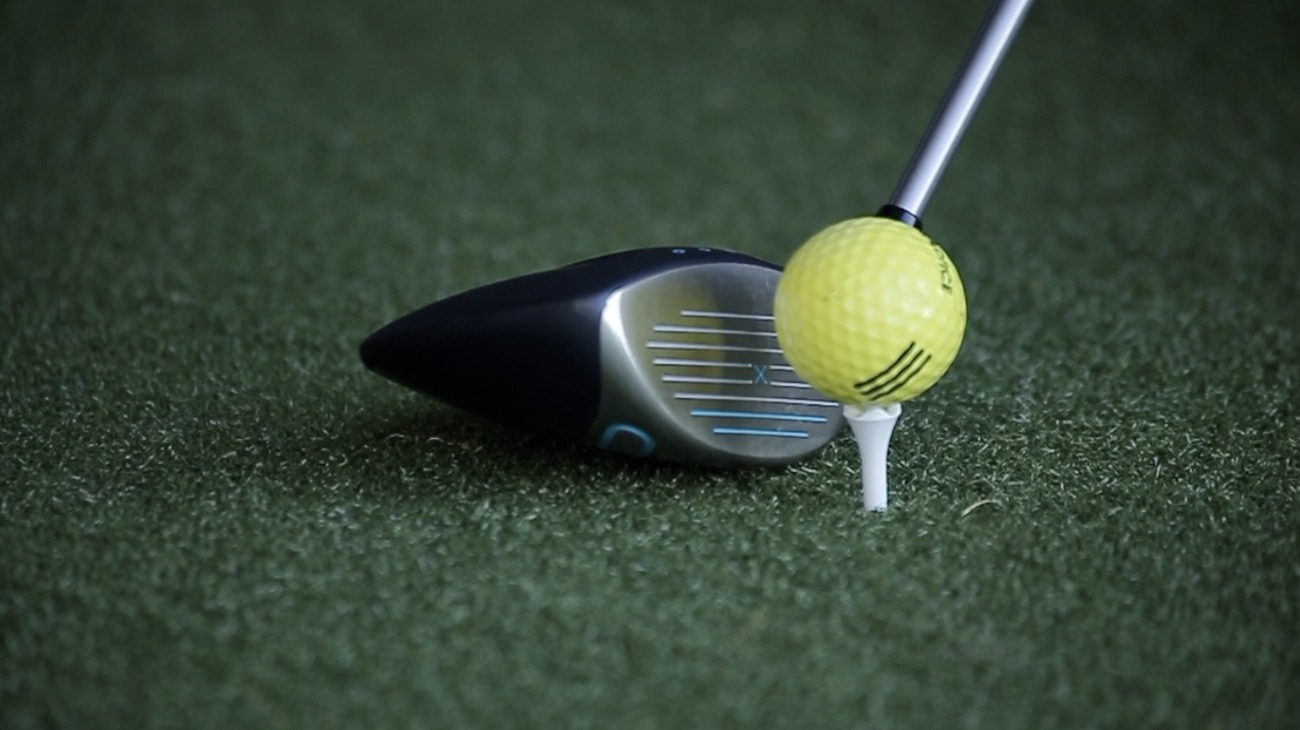
You can also put a tee in it, which is another small detail that equals a big plus as far as we’re concerned. Rubber tees are fine, but regular tees are easier to balance. Not to mention, you want to do all you can to replicate your actual golf game on the mat.
Whether you’re buying for yourself or looking for a good golf gift, start your search with Real Feel Golf Mats.
For more information, you can watch our own Todd Kolb explain what he loves about these mats.
Bottom Line
A good golf mat absolutely can benefit your golf game. You just need the right mat, the right perspective, and a few tips for hitting it off the artificial turf.
And above all, remember that a practice mat—not even a great one—can perfectly replicate the elements of the golf course. Use your mat to practice your form, but don’t put too much stock in your successes or failures off an unnatural surface.
Finally, let us know what you think! Do you have a favorite golf mat? Any tips for practicing on an artificial surface? Do you have any questions or see anything here you disagree with?
Join us in the comments and let us know! We’re always down for talking golf.
For more in-depth golf tips, visit us at GreatGolfTipsNow.com. This new video series is completely free and packed with detailed advice to help you play better golf!



For smaller mats that tend to move when you hit them, I sit a dumbbell or 2 on the edge to stabilise them. Works well. You need to do it in such a way that there is not risk of the clubbed hitting them.